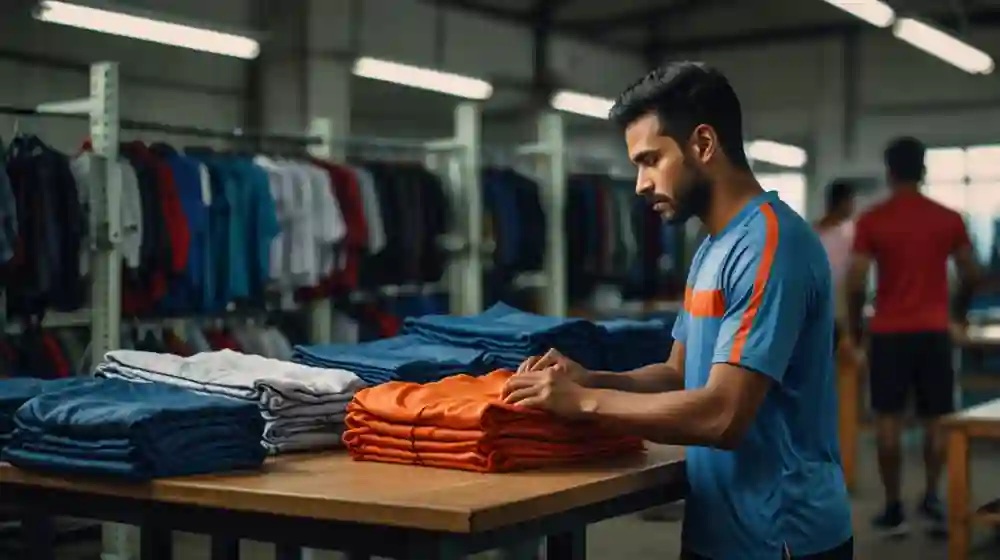
The sportswear industry in Bangladesh is booming, with the country solidifying its position as one of the leading global hubs for apparel manufacturing. Known for its cost-efficient labor, advanced production facilities, and high-quality output, Bangladesh has become a key player in the global sportswear market. However, as the demand for faster production times and agile supply chains grows, manufacturers face increasing pressure to optimize their operations. Below are three easy and practical ways to make sportswear manufacturing in Bangladesh faster without compromising on quality.
1.Streamline Production Processes with Automation
One of the easiest and most impactful ways to accelerate sportswear manufacturing is by incorporating advanced automation technologies into production lines. Although Bangladesh has a strong labor advantage, relying solely on manual processes can slow production, especially for intricate sportswear items like compression gear, running tights, and technical fabrics.
Key Steps to Implement Automation
- Invest in Specialized Machinery: Sportswear often involves detailed stitching, laser-cutting, and bonding techniques. Machines like flatlock sewing machines, ultrasonic welders, and automated embroidery equipment can significantly reduce production time while maintaining precision.
- Digitize Pattern Design and Cutting: CAD (Computer-Aided Design) systems and automated fabric-cutting machines can minimize material waste and speed up the initial stages of manufacturing. These technologies also allow for seamless customization, which is critical for personalized sportswear orders.
- Adopt Real-Time Monitoring Tools: IoT (Internet of Things)-enabled devices and smart factory solutions can help manufacturers track production lines in real time. This allows for quick identification of bottlenecks and enables managers to make data-driven decisions to maintain efficiency.
Automation not only enhances speed but also reduces the chances of human error, resulting in faster turnarounds and higher customer satisfaction.
2.Foster Better Collaboration Between Stakeholders
Another way to expedite sportswear manufacturing is by improving collaboration between different stakeholders in the supply chain. Miscommunication or delays between suppliers, manufacturers, and buyers often cause production timelines to stretch unnecessarily.
How to Improve Collaboration
- Implement Cloud-Based Communication Platforms: Platforms like Trello, Slack, or industry-specific ERP (Enterprise Resource Planning) software can centralize communication, ensuring all stakeholders have real-time updates on order status, production schedules, and shipping deadlines.
- Engage in Vendor-Managed Inventory (VMI): By allowing suppliers to manage raw material inventory, manufacturers can minimize delays caused by material shortages. A VMI system ensures that essential components like moisture-wicking fabrics, zippers, and elastics are always available when needed.
- Strengthen Buyer Relationships: Transparent communication with buyers regarding lead times, design specifications, and delivery schedules helps avoid last-minute changes that can derail production. Collaborative planning sessions with clients also allow manufacturers to pre-emptively address potential issues.
Improved collaboration reduces misunderstandings and enhances overall efficiency, ensuring that projects move forward quickly and smoothly.
3.Optimize Workforce Training and Skill Development
Despite advances in technology, human expertise remains critical in sportswear manufacturing. Workers in Bangladesh’s factories are skilled, but periodic training is essential to keep them updated on modern manufacturing techniques and industry trends.
Steps to Enhance Workforce Efficiency
- Offer Technical Training Programs: Regular workshops on handling specialized machinery, working with high-tech fabrics, and maintaining quality standards can reduce production time. Trained workers are better equipped to meet the unique demands of sportswear manufacturing, such as producing breathable, lightweight, and durable garments.
- Create Incentive-Based Productivity Models: Introduce performance-based incentives to motivate workers to achieve daily production targets without compromising on quality. This can include bonuses, recognition programs, or opportunities for career advancement.
- Encourage Cross-Departmental Knowledge Sharing: Workers from different departments, such as cutting, stitching, and quality control, should have a basic understanding of each other’s processes. This allows for better problem-solving and minimizes disruptions when unexpected challenges arise.
An efficient, well-trained workforce not only speeds up production but also ensures high-quality output, which is critical for maintaining Bangladesh’s reputation in the global sportswear market.
The Impact of Faster Manufacturing
By implementing these strategies, sportswear manufacturers in Bangladesh can significantly reduce lead times, enhance productivity, and increase profitability. Faster production not only helps manufacturers meet tight deadlines but also allows them to take on more orders, improving their competitiveness in the global market.
Additionally, these improvements benefit the broader Bangladeshi economy. As manufacturing processes become more efficient, factories can generate more employment opportunities, attract greater foreign investment, and strengthen the country’s position as a leader in the global sportswear industry.
Conclusion
The growing demand for sportswear requires manufacturers in Bangladesh to adapt quickly and efficiently. By embracing automation, fostering better collaboration, and optimizing workforce training, they can drastically improve production speed while maintaining the high quality that buyers expect. With these simple yet effective strategies, sportswear manufacturers can not only meet market demands but also drive long-term growth and success.
Bangladesh has already proven its capabilities in apparel manufacturing. Now, by focusing on speed and efficiency, the nation is poised to become an even more formidable force in the global sportswear industry.
Related posts:

Categories
- Apps (1)
- Automotive (23)
- Beauty (7)
- Business (122)
- Celebrities (2)
- Digital Marketing (21)
- Ecommerce (2)
- Education (22)
- Entertainment (39)
- Events (6)
- Fashion (1)
- Features (4)
- Finance (1)
- Fitness (10)
- Food (2)
- Forex & Crypto (22)
- General (116)
- Health (48)
- House (61)
- Lifestyle (57)
- Marketing (8)
- Parenting (3)
- Pets (10)
- Real Estate (8)
- Safety and Security (14)
- Social Media (31)
- Sports (138)
- Technology (73)
- Travel (23)






















